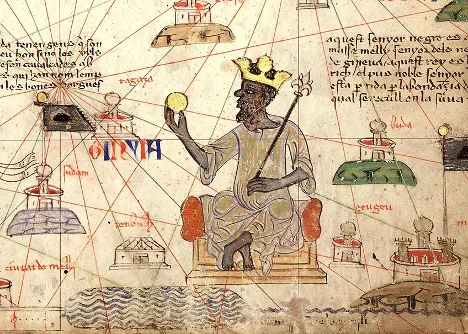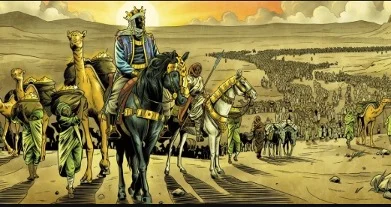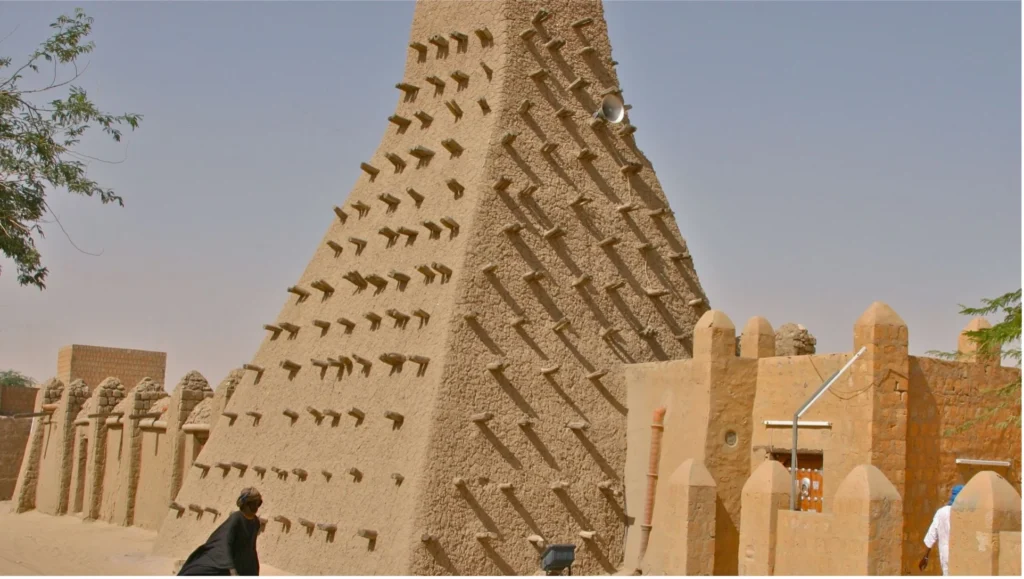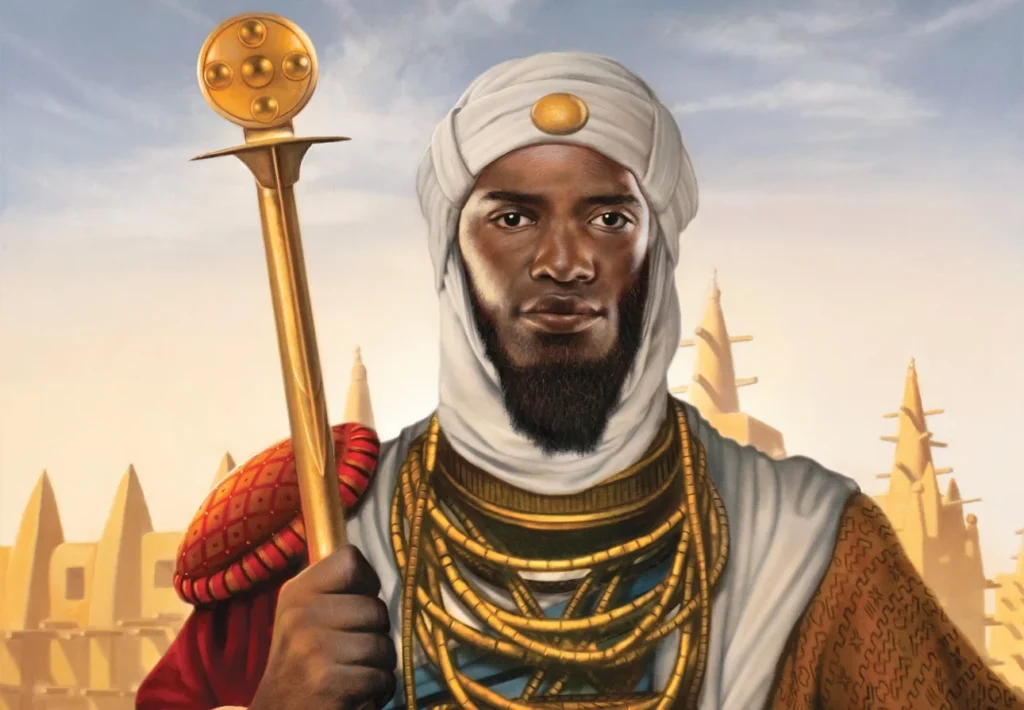When we talk about the wealthiest people of all time, few names stand as prominently as Mansa Musa I of Mali, the ninth Mansa (emperor) of the Mali Empire. Born around 1280 CE and ruling from 1312 to 1337 CE, Musa’s net worth has been estimated by modern historians at the staggering equivalent of $400–500 billion in today’s currency, far surpassing Jeff Bezos or Elon Musk at their peaks. His extraordinary wealth was rooted in Mali’s control over natural resources, particularly gold, of which the empire produced nearly 50% of the world’s supply in the 14th century.
According to Arab historian Al-Umari, Mali’s mines at Bambuk, Boure, and Galam yielded several tons of gold annually, with each ton in medieval times valued at billions of today’s dollars. By comparison, just Musa’s pilgrimage caravan alone carried over 24,000–30,000 pounds (11–14 metric tons) of gold dust, spread across 80–100 camels, each loaded with 300 pounds (136 kg) of pure gold.

Gold and Salt: The Backbone of Wealth
Alongside gold, the salt trade was equally lucrative. In Mali’s economy, a single 200 kg block of salt could fetch the equivalent of an ounce of gold in southern markets. Musa’s empire controlled the Taghaza and Taoudenni salt mines, which produced thousands of camel-loads yearly. Taxes on caravans traveling the trans-Saharan routes further enriched Mali.
Estimates suggest that the empire collected revenues in the millions of gold dinars annually by taxing the flow of goods such as ivory, slaves, and kola nuts. Musa also expanded Mali’s borders to incorporate strategic cities like Timbuktu and Gao, extending the empire over 2,000 miles east to west and ruling a population of 40–50 million people across modern Mali, Senegal, Gambia, Guinea, Niger, Nigeria, Mauritania, and Chad.
The 1324 Pilgrimage to Mecca

Mansa Musa’s 1324 pilgrimage to Mecca remains one of the most extravagant events in history. His caravan included 60,000 attendants, with 12,000 slaves clothed in fine brocade and Persian silk. Each slave is reported to have carried a 4-pound (1.8 kg) gold staff, while heralds distributed gold dust to the poor along the way. The sheer volume of spending in Cairo disrupted the Egyptian economy. Contemporary sources such as Al-Umari record that Musa’s spending reduced the value of gold by 20–25%, causing inflation that lasted over a decade. In modern terms, it was as if a single man had destabilized an entire national economy through overspending.
Cultural and Educational Patronage

Yet Musa’s wealth was not just displayed in gold but invested in cultural and religious development. In Timbuktu, he commissioned the Djinguereber Mosque, built in 1327 by the Andalusian architect Abu Ishaq al-Sahili, at a reported cost of 200 kg of gold (over $10 million today). He also funded the expansion of the University of Sankore, which at its height housed 400,000–700,000 manuscripts, rivaling the libraries of medieval Europe.
Timbuktu’s population swelled to nearly 100,000 inhabitants, making it one of the largest urban centers of its time. Musa also established educational networks linking Mali to Cairo, Fez, and Baghdad, drawing scholars and traders to West Africa. This intellectual flowering, combined with architectural achievements, ensured that his wealth left a lasting legacy beyond material riches.
Factors Behind Musa’s Extraordinary Fortune
Five major factors explain Musa’s extraordinary fortune: first, his monopoly over gold and salt, resources that accounted for nearly two-thirds of Mali’s revenues; second, his control of trade routes, which allowed him to tax every caravan crossing the Sahara; third, global demand, since both Europe and North Africa depended on West African gold to mint coins; fourth, political stability, as his armies secured borders and ensured uninterrupted trade; and fifth, his charismatic leadership, most famously displayed during the pilgrimage that made Mali internationally famous. Musa’s fame reached Europe, where he was immortalized in the Catalan Atlas of 1375, depicted holding a golden nugget and a scepter, symbolizing his unmatched riches.
Legacy and Historical Significance
Modern economists argue that Musa’s net worth in today’s terms would outstrip any billionaire in history, with estimates around $450 billion. Unlike modern fortunes tied to fluctuating stock prices, Musa’s wealth rested on tangible resources and direct political control of gold and salt mines. Even when adjusted for economic scale, his ability to singlehandedly affect the price of gold across the Mediterranean demonstrates a level of influence no individual today could replicate. After he died in 1337 CE, Mali began to fragment under weaker successors, and by the late 15th century, the empire was eclipsed by the rising Songhai Empire. Nevertheless, Musa’s reign remains a benchmark in history, representing the pinnacle of African wealth, power, and cultural patronage.
Mansa Musa’s story illustrates that true wealth is not only measured in gold but also in legacy. His reign left behind mosques, schools, and manuscripts that shaped West African civilization for centuries. With control over half of the world’s gold and mastery of trade networks, he became the richest man in recorded history, a title few dispute. His impact stretched from Cairo to Timbuktu, from European maps to Islamic scholarship, ensuring his place as both a financial titan and a cultural visionary whose wealth transformed not only Mali but the world.
Also Read: Mullah Din Muhammad Mushk-e-Alam: Faith, Fury, and Afghan Resistance



